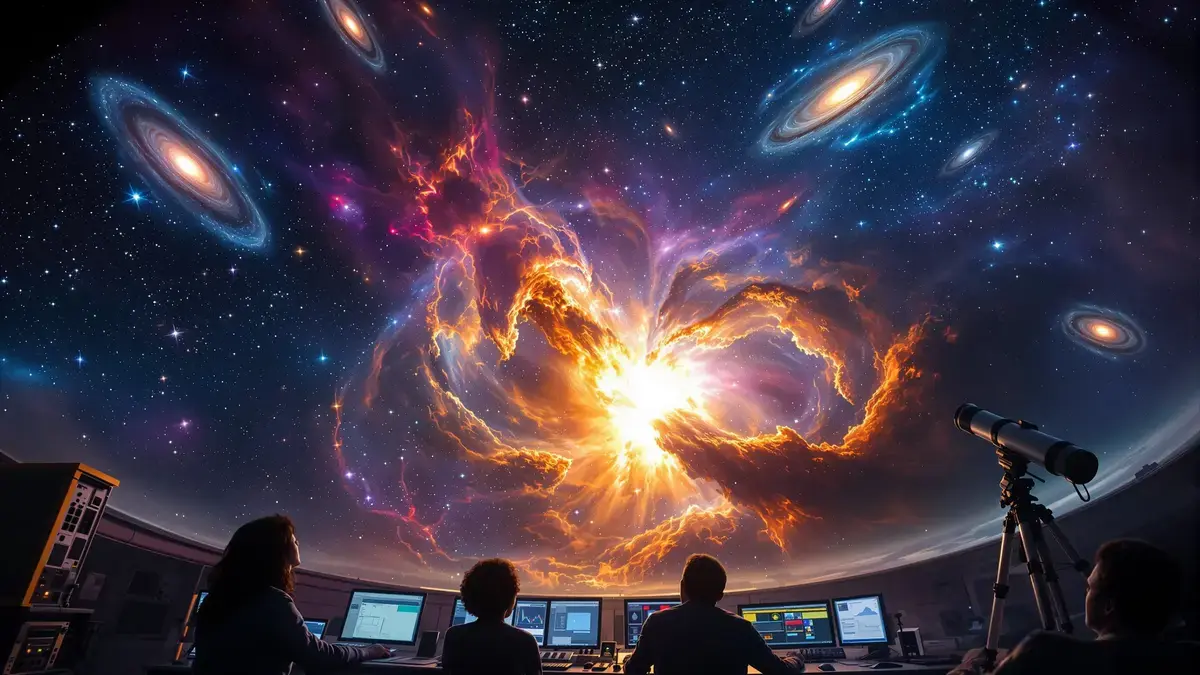Astronomers have made a revolutionary discovery regarding dark matter by observing a collision between two galaxy clusters. Using advanced instruments such as Hubble and Chandra, the researchers highlighted the unique behavior of dark matter, which differs from ordinary matter during collisions. This breakthrough has significant implications for understanding the universe and raises new questions about its interactions with classical forces.
Key information
- Discovery of dark matter during a galaxy collision.
- Use of instruments such as Hubble and Chandra for analysis.
- Unique behavior of dark matter that defies classical interactions.
- Deep implications for understanding the universe and cosmological models.
Revolutionary discovery of dark matter
A team of astronomers recently made a significant discovery regarding dark matter, one of the most persistent mysteries in modern astrophysics. During a spectacular collision between two galaxy clusters, researchers were able to observe unique behaviors of dark matter, highlighting its crucial role in the universe as we know it.
Use of advanced instruments
To carry out this study, scientists deployed advanced observational instruments such as the Hubble Space Telescope and the Chandra X-ray Observatory. These revolutionary tools allow for precise analysis of galactic events by capturing essential data on the distribution of dark matter and its dynamics during galaxy collisions.
Unique behavior of dark matter
What makes dark matter particularly fascinating is its ability to interact differently from ordinary matter during these collisions. Unlike visible objects that emit or absorb light, dark matter remains invisible, complicating its study. Nevertheless, it exerts a powerful gravitational influence, shaping the formation and structure of galaxies.
Major implications for particle physics
The implications of this discovery are vast and have a direct impact on our understanding of the universe. It raises fundamental questions regarding the minimal interactions of dark matter with classical forces. Ongoing research in this field could enrich our cosmological models and prompt deeper explorations in both theoretical and experimental physics.
Distribution of dark matter during galactic collisions
Galactic collisions provide a unique window into the distribution and distinct behavior of dark matter. By studying these events, astronomers can better understand how this mystical substance influences the evolution of galaxies and their arrangement in the universe.
Questions about dark matter interactions
This discovery also raises new questions about how dark matter interacts with other forces of nature. Far from being a mere theoretical subject of study, dark matter challenges established theories and compels researchers to reconsider some of the fundamental principles of physics.
Enriching cosmological models
This notable advancement in understanding dark matter allows us to enrich our current cosmological models. It also opens the door to new research avenues that could illuminate many aspects of the universe that remain poorly understood.
For the future of dark matter research
Dark matter remains a fascinating field of investigation, challenging existing theories while proposing intriguing perspectives for cosmic exploration. With each discovery, researchers are encouraged to deepen their knowledge and develop new theories that could one day revolutionize our understanding of the universe.











